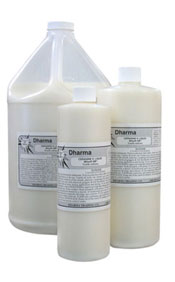This post contains affiliate links for which I receive compensation
Bad Machine Quilting
by Gail
I need advice...I sent two quilts to a long arm machine quilter who was recommended. I am heartbroken at the results - hard, stiff, threads pulling, quilting stitches coming out and the quilts are full of holes.
I started to bind them and got to thinking if washing them might help. Should I remove the quilting and then wash them?
They are both batiks and they are both very special. One is for our daughters birthday and the other for our granddaughter who we will finally see this summer. We haven't seen her in 6-1/2 years. She is turning 9 this summer.
Any advice would be appreciated.
Reply
I am so very sorry for you.What happened to a friend of mine...
One of my bee friends has taken out the quilting from two quilts she had long arm quilted (at different times and by two different quilters).For the first one, the quilting was a beautiful pantograph (an interlocking edge to edge design with flora and fauna) but it just didn't jive with her 'idea' of her quilt. In her opinion, the quilting design was much too contemporary for her traditional quilt. It was made from a pack of Cherrywood's "Crazy Ladies" hand dyed fabrics. I'm thinking the quilter took that as a cue that this quilt required 'contemporary quilting'. I believe that it was a miscommunication...or lack of communication...during the quilting planning process.
The second quilt where she removed the quilting was a reproduction of an antique pineapple quilt that she'd seen somewhere. Quite frankly, all the quilt needed was ditch quilting or some sort of grid quilting to emphasize the 'antique' feeling, but the long arm quilter did some curvy, cloud-like thing that really disrupted the flow of the pineapple blocks. On top of that, if I remember correctly, the quality of the quilting was not up to par either.
So she picked out all the quilting stitches and re-quilted it herself.
In your situation...
If you had no issue with the quality of the quilter's work, then if it was me, I'd rip out the quilting and chalk it up to mis-communication between you and your quilter.And then strive to better communicate the next time around.
But because there is a problem with the thread and the quilting stitches coming undone, I would first take the quilt back to the long arm quilter. Those problems shouldn't be happening, especially when the quilt isn't even bound yet. See if you can get some remedy from her/him.
If you wash the quilt first, and the problem(s) get worse and THEN you go back to the quilter, the situation is muddied...perhaps the problems happened with improper washing. Does that make sense?
As far as the stiffness goes, that may simply be the density of the quilting stitches and/or the type of batting used. Your quilter will be able to tell if it will 'soften' up with washing.
The holes you are seeing...I'm not sure if you're talking about the threads in the fabric being torn and creating holes or holes left from the needle.
If its threads torn creating holes, again, I'd go back to the quilter for remedy. Having holes torn into a quilt top is not what you paid for.
However, I'm betting that the holes you are referring to are from the larger needle used in long arm quilting. I am not a long arm quilter, myself, but I understand that a larger needle like a 90/14 is commonly used. This needle leaves a larger needle hole in the fabric, but I do believe that with washing this hole will close up, at least somewhat.
While hopefully, you'll be able to remedy your situation with the machine quilter before your daughter and granddaughter arrive this summer, we quilters regularly deliver quilts later than we'd like. But our loved ones appreciate them all the same. I'm sure your daughter and granddaughter will feel all the love that went into the making. Please don't let this hamper time your with them. YOU have too much loving to do while they're with you. And time is all too precious.
Readers, I'd appreciate any comments or suggestions for Gail. If you've been in this situation...whether you're the long arm quilter or the quilt top maker, let us know how you handled it. Just use the 'comment' link below.
Piecefully,
Julie Baird
Editor
PS Gail...If you haven't pre-washed your fabrics before the quilt was made, test them for bleeding before washing. Your fabrics will be less apt to bleed in cold water, though it's not a guarantee.
Comments for Bad Machine Quilting
|
||
|
||
|
||
|
||
|
||
|
||
|
||
|
||
|
||
|
||
|
||
|
||
|
||
|
||
















